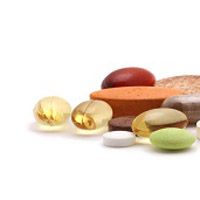Article
Chronic Pain Is the Most Common Reason for Dietary Supplement Use
Author(s):
Knowledge of dietary supplement properties, uses, and contraindications is highly relevant to any health care practitioner that treats patients with chronic pain. Data shows that the top four reasons for supplement use are back pain, neck pain, joint pain, and arthritis.

Knowledge of dietary supplement properties, uses, and contraindications is highly relevant to any health care practitioner that treats patients with chronic pain. CDC data, shared by David Kiefer, MD, at the 2014 annual clinical meeting of the American Academy of Pain Management, in Phoenix, AZ, shows that the top four reasons for supplement use are back pain, neck pain, joint pain, and arthritis. Kiefer, a board-certified family physician with extensive experience in botanical and integrative medicine, discussed how to use dietary supplements safely and effectively and provided examples of supplements that have been shown to be clinically useful for chronic pain.
One top pick for treating joint pain is avocado-soybean unsaponifiables (ASUs). Data from four clinical trials indicate that a 300-600 mg daily dose of this highly concentrated food extract improves knee pain, hip pain, and swelling in patients with osteoarthritis. Kiefer reminded the audience that food extracts, botanicals, and vitamins work much slower than pharmaceuticals. In the ASUs trials, for example, improvements were only seen after three to six months.
It is also important for doctors and patients to pay particular attention to the specific formulation of vitamins and herbs that have been tested. In the case of ASUs, a formulation called piascledine 300 was used for all of the clinical trials; therefore, this is the only preparation that should be recommended to patients.
Omega-3 fatty acids are also a widely-used supplement for joint pain, and improvements have been reported in patients taking 2-4 g of DHA/EPA per day. It is important to note that plant-based sources of omega-3s, such as flax seed extract, provide only the ALA type; whereas, it is the DHA and EPA types found in coldwater fish that fight inflammation and improve joint pain. ALA is converted in vivo to DHA and EPA, but at a very low rate. Omega-3 preparations from algae provide DHA, which is converted to some extent to EPA in the body, and may be suitable for vegetarians.
High-quality information on dietary supplements can be found in journals, books, and online. Many educational websites, such as Sloan-Kettering and Bastyr University, offer detailed information; however, Kiefer recommended one of two paid services — Natural Standard or Natural Medicines Comprehensive Database – for quick access to clinically relevant information. While these resources are an excellent source of information, an extended network of well-informed colleagues, for example a naturopathic physician or a pharmacists, is also highly desirable.
Quality of dietary supplements can vary greatly, and Kiefer recommended using products that have been certified by one of four third-party auditors: TruLabel from the National Nutritional Foods Association, NSF Institute, ConsumerLab, or United States Pharmacopeia. These auditors confirm that what is on the label is in the bottle. United States Pharmacopeia also confirms that companies use good manufacturing processes (ie, GMP audit).
In summary, Kiefer described a holistic approach to patient care, where dietary supplements are used in conjunction with pharmaceuticals and other therapies. He explained that a holistic or integrative medical practitioner will develop a personalized medical plan together with the patient that addresses root causes and considers all aspect of a person: body, mind, spirit, and emotion.





